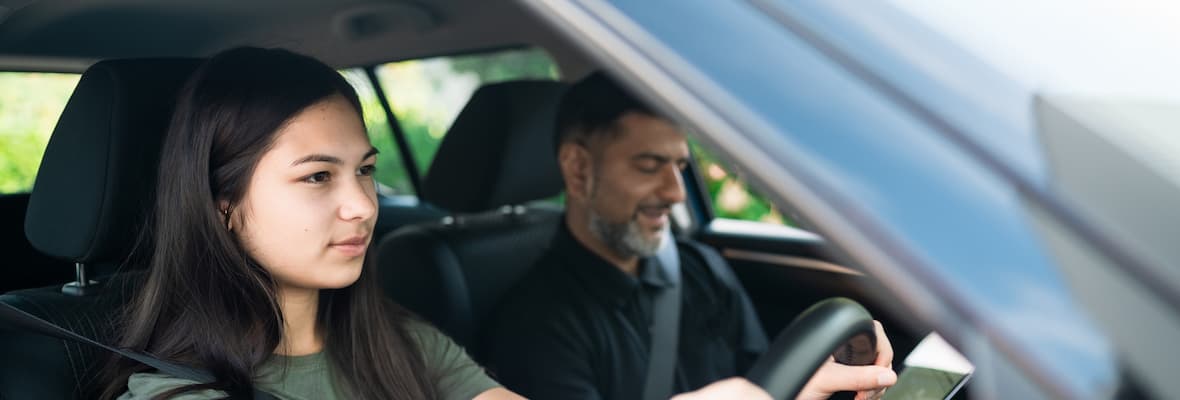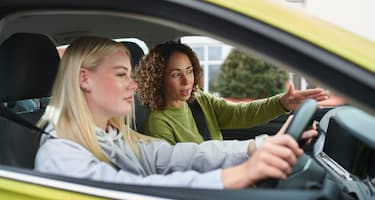Before you get behind the wheel, there’s a lot to learn. As a major milestone in any young person’s life, learning to drive will help you gain independence, but it’s also a responsibility.
With these driving tips, you’ll be able to get the most out of your practice and learn how to drive safely on the road ahead.
Finding a Supervisor
The first thing you’ll need to do is find a trusted supervisor to help guide you through some driving lessons and prevent any bad habits before they start.
Learner driver restrictions across Australia suggest 100+ hours of supervised driving to help young drivers gain on-road experience. Keep in mind that depending on the state you live in, there are a number of conditions a supervisor must meet.
You’ll be required to complete nighttime driving hours; ranging from 5-20 hours depending on your age and the state you live in. If you live in a regional area, you should also practice on main roads, country roads, mountain or range roads, and unsealed (dirt) roads.
You can choose to drive with a professional instructor or someone you know, but it’s recommended for most people that you drive with a combination of both.
Manual Cars vs. Automatic Cars
You can learn to drive in either a manual car or an automatic car. However, your supervisor or instructor must hold a full Australian driver’s licence for at least one year, for the class of vehicle they will be learning in.
This means that if you’re learning to drive a manual car you cannot be supervised by someone with an automatic condition on their licence.
Driving Practice
When you first start driving, you’ll learn how to steer, brake and manoeuvre with the help of your instructor and/or supervisor. Not to mention, there may also be some additional features like power steering and different brakes or mirrors in various vehicles that can take some time to get used to.
So, it’s a good idea to drive as much as you need to in empty car parks or quiet suburban streets to help you feel comfortable.
Before You Start Driving
Before getting in the car, you’ll need to prepare for the drive ahead. Your preparation should start with a safety check. Please ensure that your vehicle:
Is in the same class as stated on your Learner’s Permit
Has L-plates clearly visible to other drivers on the front and back
Is registered through your state Department of Transport
Is roadworthy and has wipers, rear vision mirrors, a warning device (horn), seat belts in good working order, operating brake lights, a handbrake, steering wheel, foot brakes and operating indicator lights. These are only some examples.
Has a dedicated place for you to store your learner’s log
Has a dedicated place to keep your learner’s licence when you drive
Is insured with at least compulsory third-party insurance
Understanding Road Rules
Studying and reviewing your knowledge of your state’s road rules is an essential part of preparing for your driver’s test. These driving tips will also help you become a safe driver and ensure that you’re focusing on the well-being of other road users.
Here are some of the rules you must observe:
- Braking - Brake early and gently where possible and firmly only when travelling in a straight line, according to the condition of the road's surface.
- Steering - You must be able to comfortably reach and keep both hands on the steering wheel at all times unless you’re changing gears or indicating.
- Speed limit - You must not drive over the speed limit on any length of road.
- Following distance - You should travel at least 3 seconds behind the vehicles in front of you, as this will help to limit the risk of causing accidents.
- Changing lanes & merging - When you change lanes, you must give way to any vehicle in the lane you’re moving into.
- Giving way - You must always give way at give way signs and check if it’s safe to continue driving in the ongoing traffic.
- Keeping left & Overtaking - You must stay close to the left side of the road on single-lane roads but on multi-lane roads, you should remain in the left lanes unless you’re overtaking.
- Mobile phone - For any driver, you must not use a mobile, under any circumstances, while driving and put you or other drivers at risk of a crash.
- Alcohol & Drugs - You must maintain a zero blood alcohol concentration level while driving and risk a serious accident.
Practical Driving Test Tips
During your practical driving test, you’ll be asked to perform a series of driving skills in several different situations (including merging and turning at intersections).
You will be measured based on your skills in the driver's seat.
Before you start the test, don't forget to adjust your seat height for a good view of the road. Check your mirror to find each blind spot, be aware of important controls, and be confident in the driving skills that will help you pass this test.
Your performance will be determined by your ability to:
Control the vehicle (gears, clutch and stalling)
Accelerate and brake
Safely steer your vehicle
Position your vehicle on the road
Turn your vehicle on the road
Stay under the speed limit
Scan for potential risks, and blind spots, and check over your shoulder
Make sound judgements
Assess any impact on road safety
Signal correctly
Adhere to road signs, traffic signals and road markings.
Safer Driving Tips
Whether you’re added to a parent’s existing car insurance policy or you get a quote for your own Car Insurance policy, Budget Direct can ensure that you'll be insured as a new driver.






